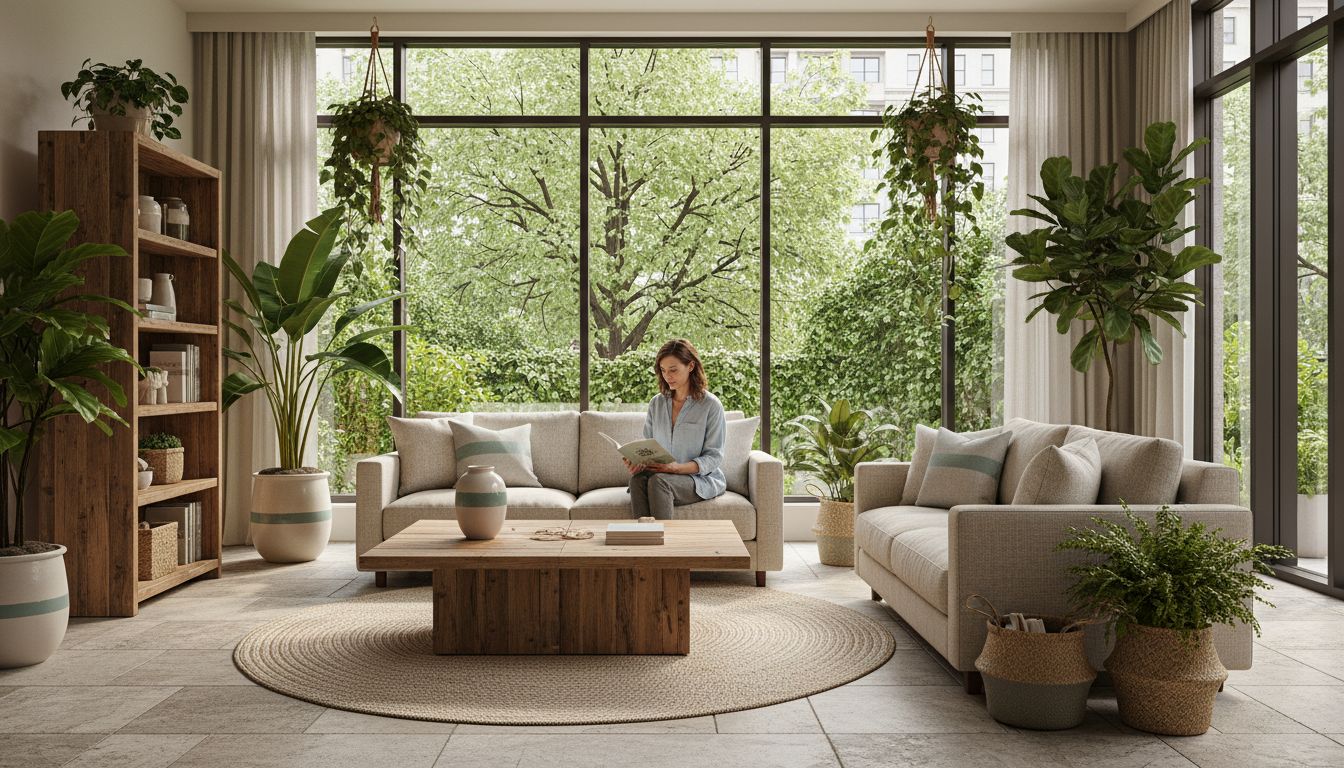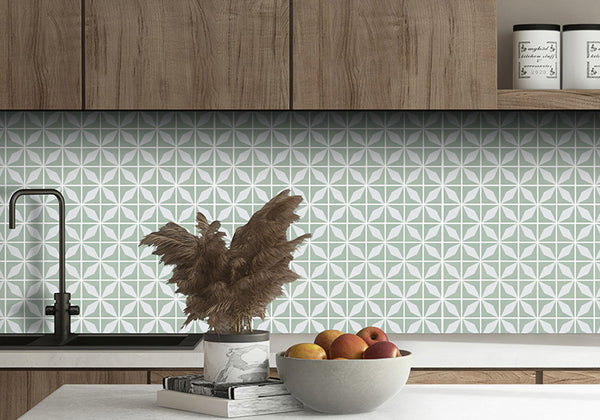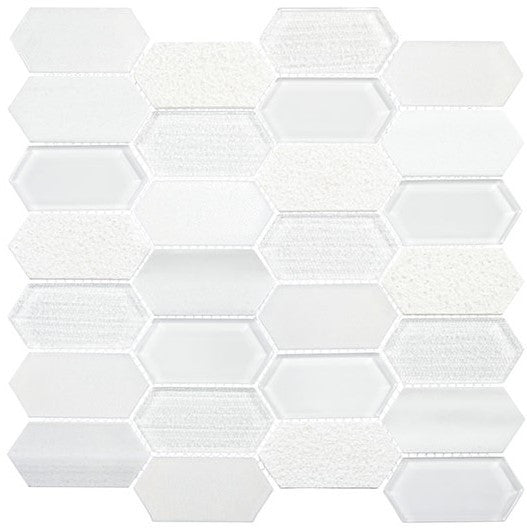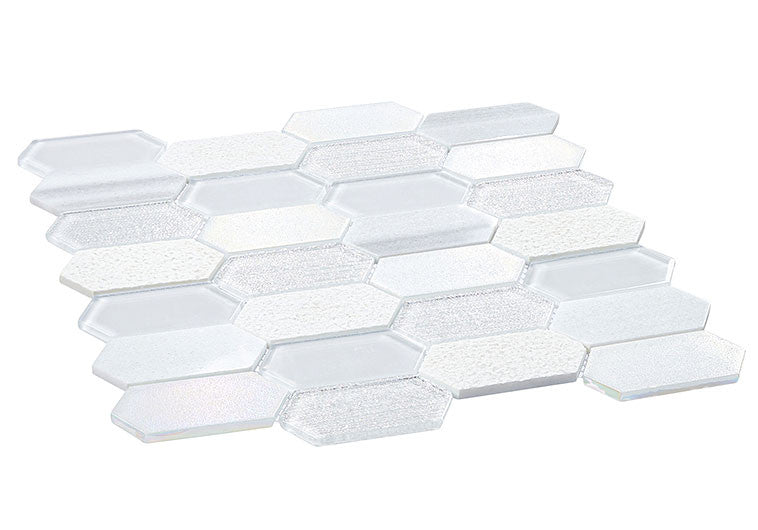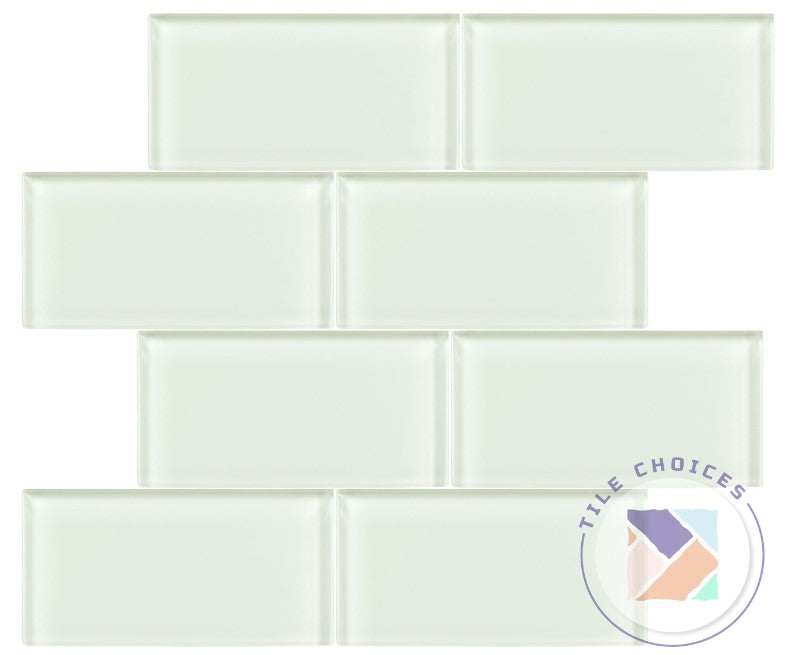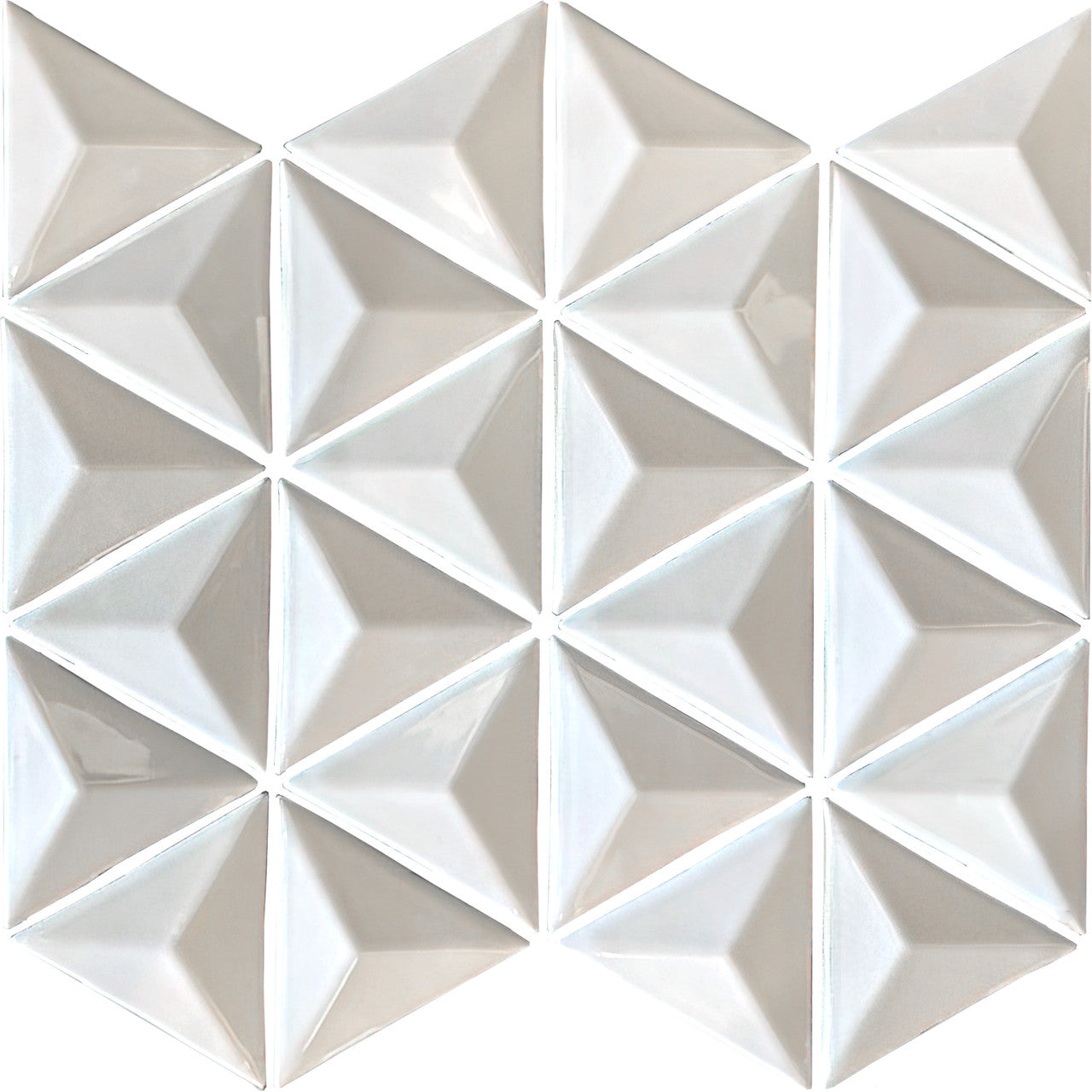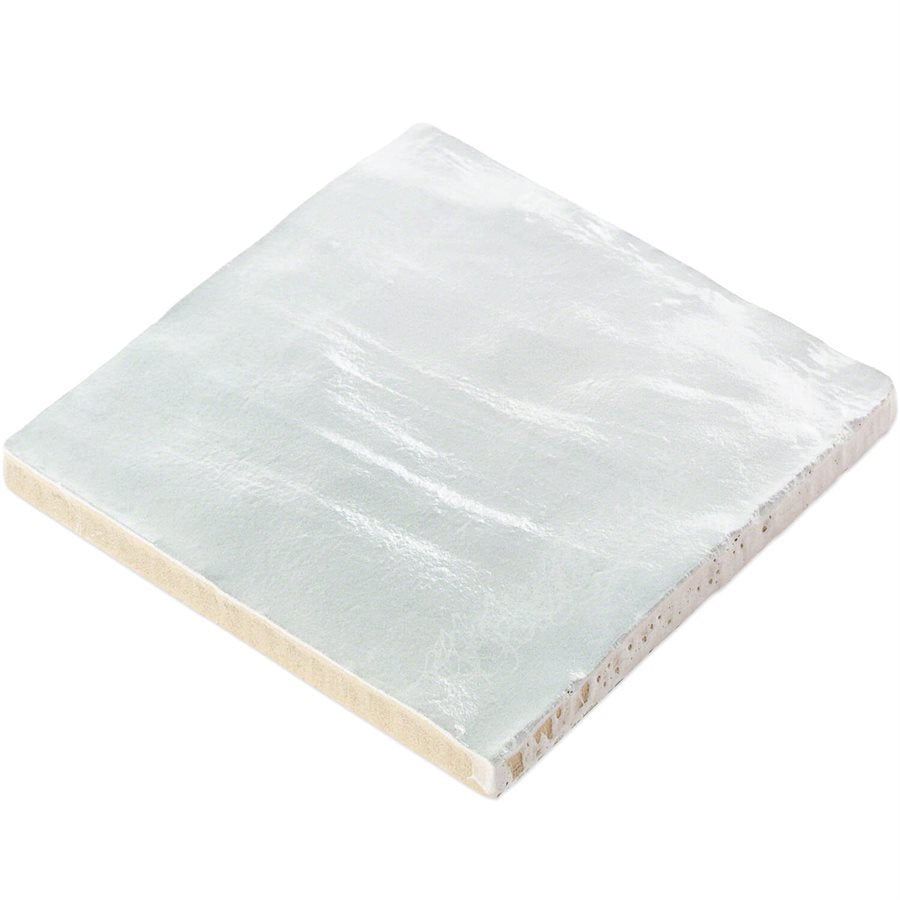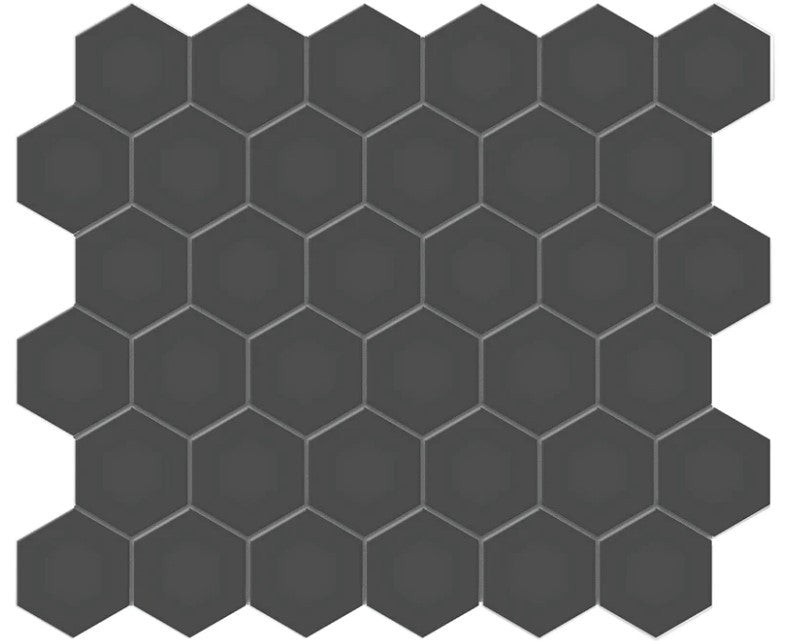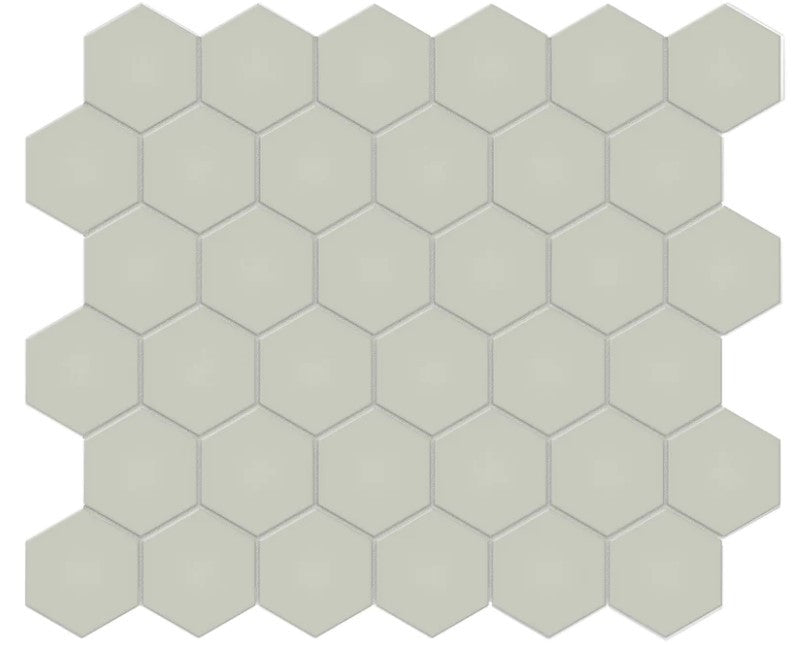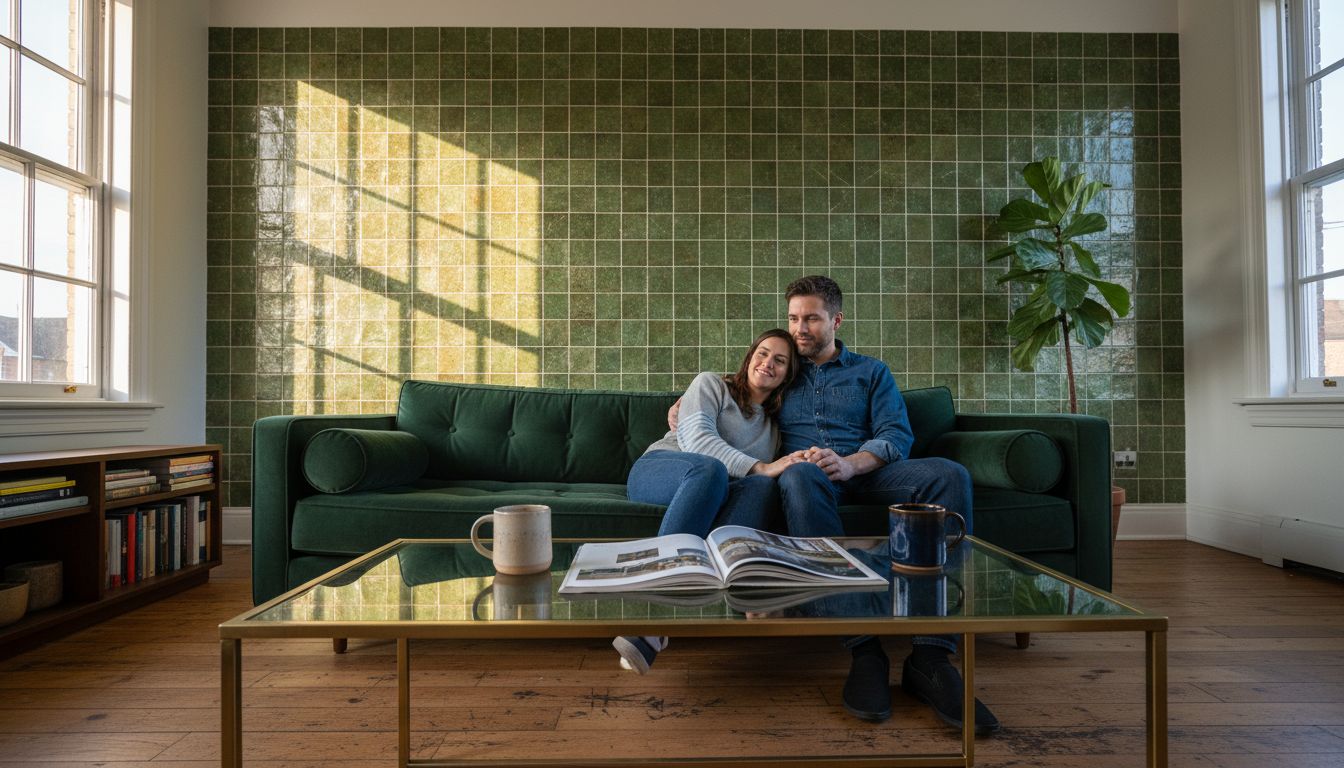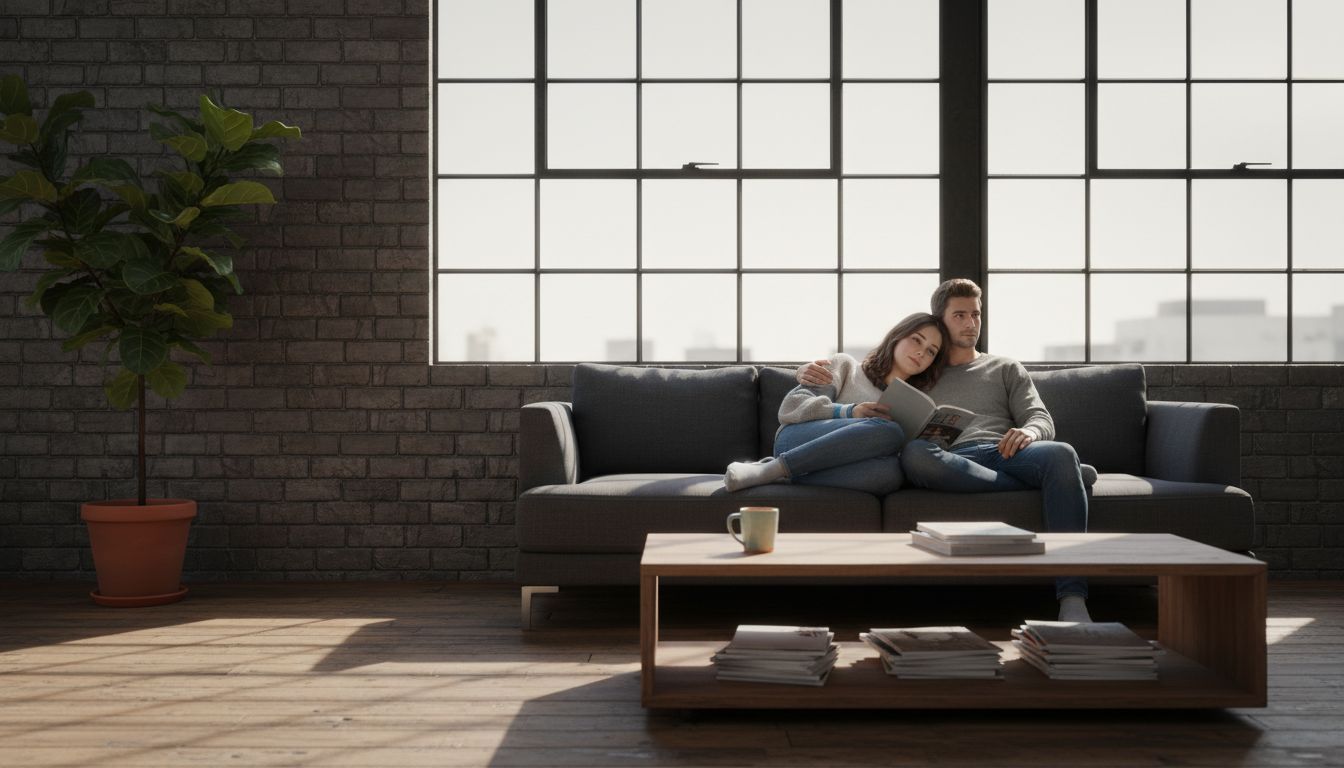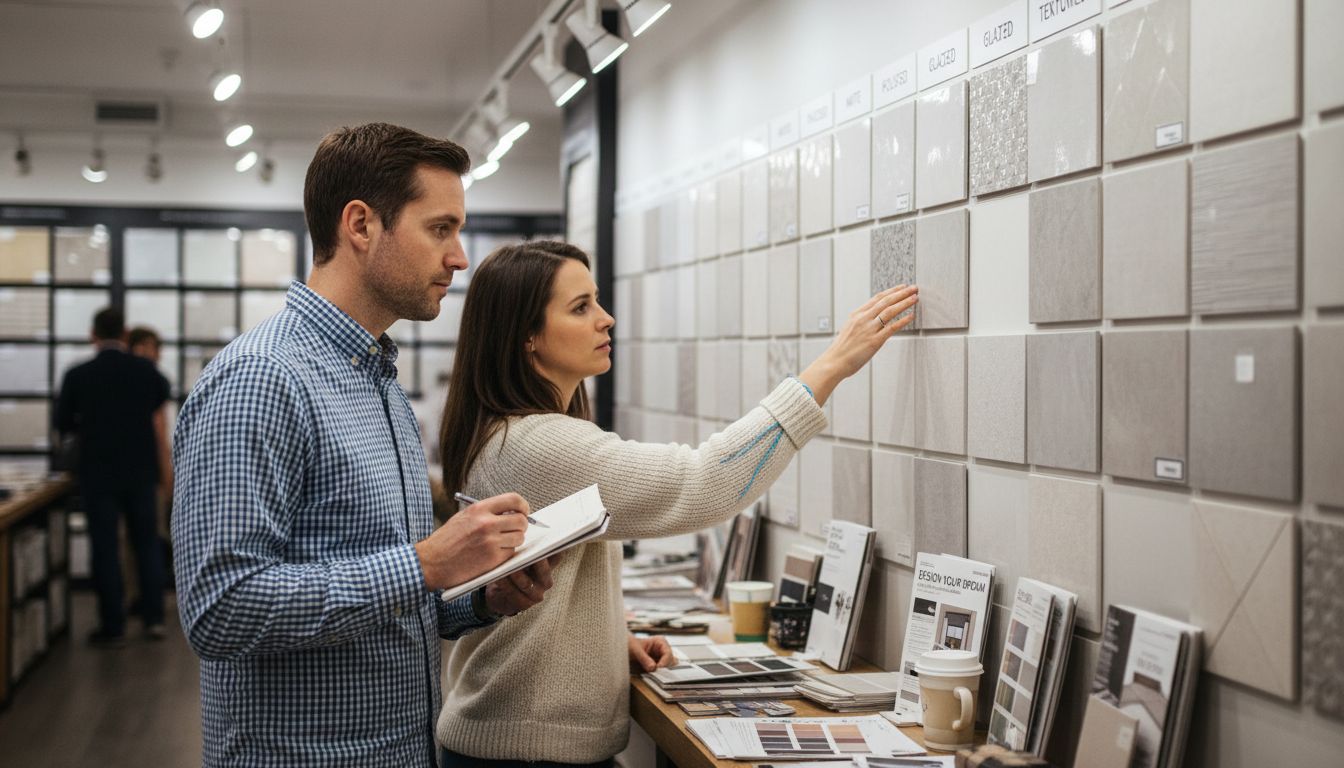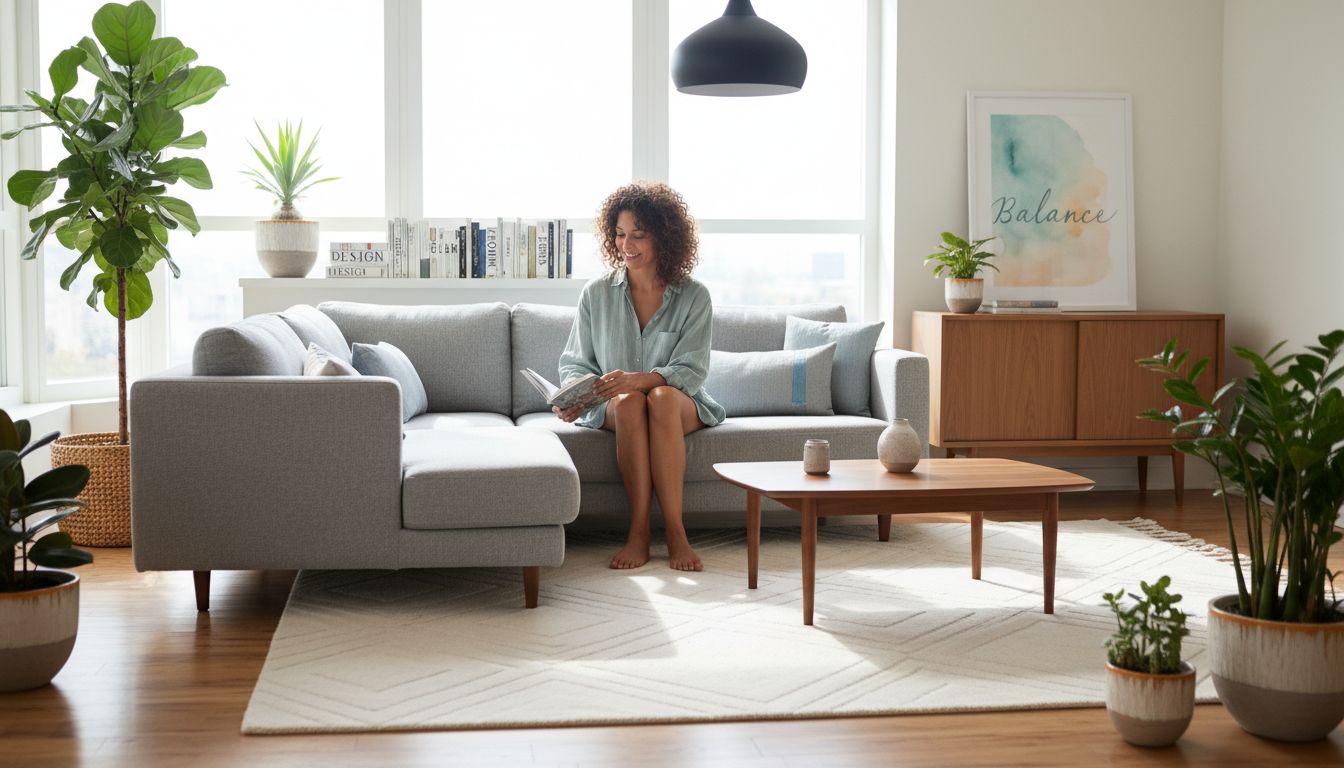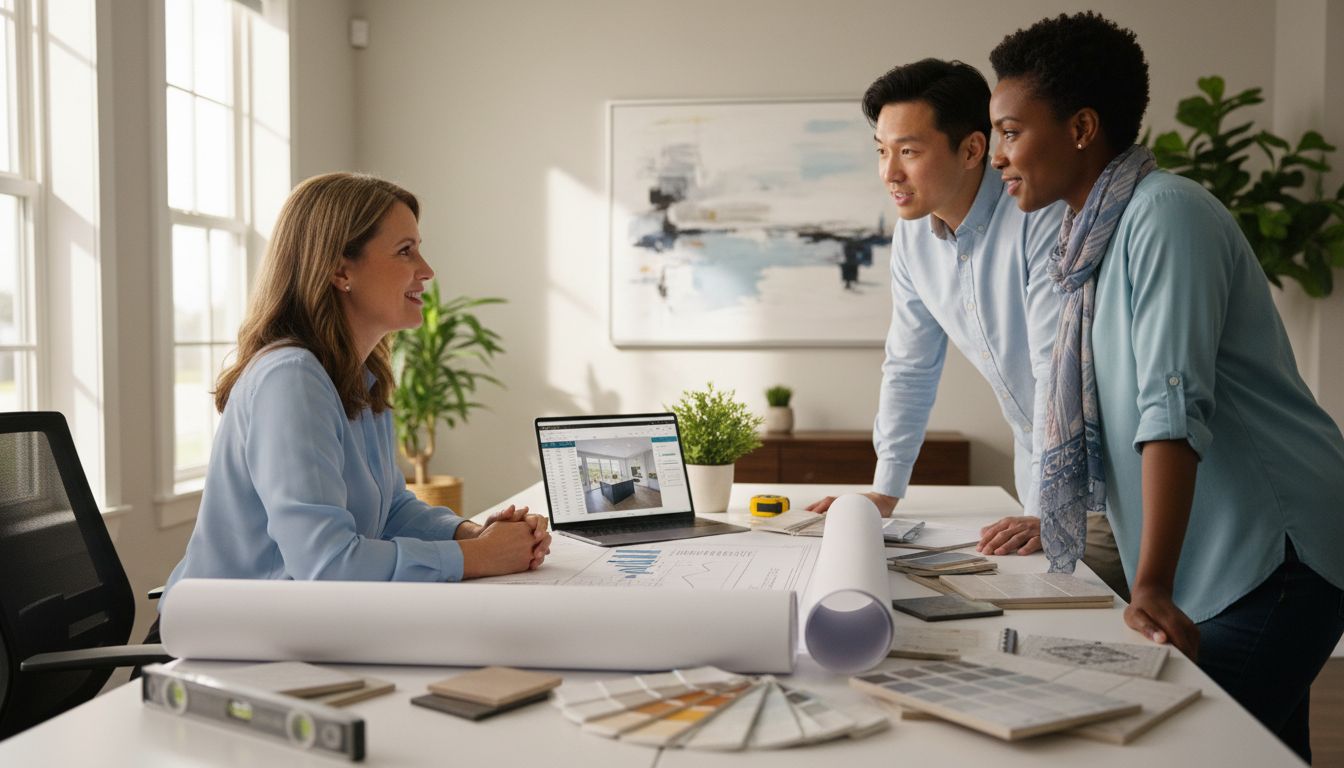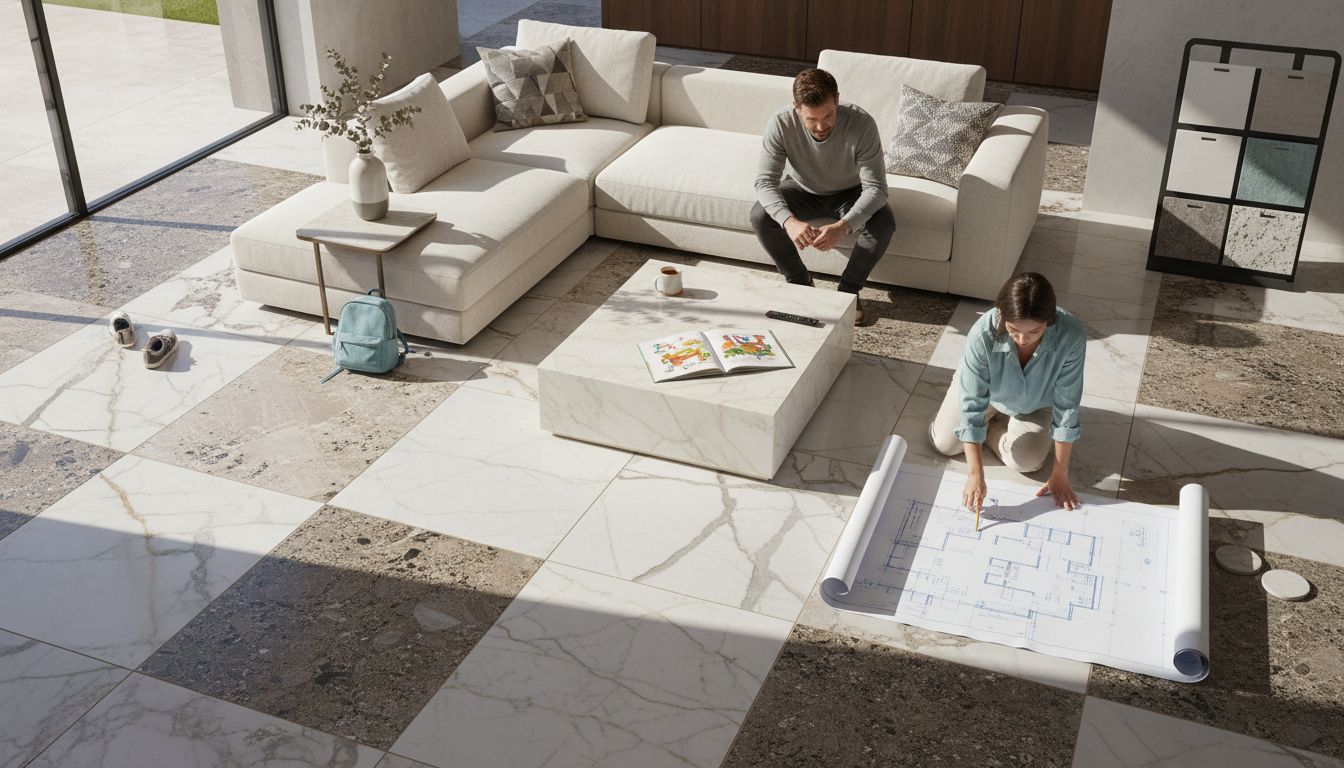Nearly 90 percent of people report feeling calmer in spaces that reflect the natural world. With city living and technology on the rise, many find themselves longing for the comfort and serenity nature brings. Nature inspired interiors bridge that gap by weaving natural materials, patterns, and colors into everyday living spaces. Discover how the right design not only beautifies your home but also supports your well-being and taps into our deep-rooted connection to the outdoors.
Table of Contents
- Nature Inspired Interiors Defined and Explained
- Types of Nature Inspired Interior Styles
- Biophilic Design Principles and Features
- Selecting Materials and Tiles for Natural Spaces
- Benefits and Practical Implications for Projects
- Common Pitfalls and How to Avoid Them
Key Takeaways
| Point | Details |
|---|---|
| Nature Inspired Interiors | This design approach integrates biophilia and sustainability to enhance well-being and ecological responsibility in human living spaces. |
| Key Characteristics | Essential elements include organic materials, natural light, and greenery, fostering a strong connection between occupants and the natural environment. |
| Biophilic Design Principles | Prioritize natural daylight, living plants, and organic shapes to create nurturing spaces that significantly improve physiological and psychological health. |
| Common Pitfalls | Avoid overusing natural elements or mismatching styles, ensuring cohesive and authentic designs that respect local ecological contexts. |
Nature Inspired Interiors Defined and Explained
Nature inspired interiors represent a transformative design approach that bridges the gap between human living spaces and the natural world. According to Sustainability Directory, this design philosophy is “a confluence of biophilic design, environmental psychology, and sustainability principles, offering a pathway to enhanced well-being and ecological responsibility”.
At its core, nature inspired interiors go beyond mere aesthetic mimicry. They seek to create holistic environments that reflect natural systems, materials, and patterns. Wikipedia’s exploration of biomimetic architecture reveals that these design strategies aim to understand and replicate the fundamental rules governing natural forms, not just superficial appearance.
Key characteristics of nature inspired interiors include:
- Organic color palettes drawn directly from natural landscapes
- Incorporation of living plants and natural elements
- Use of sustainable and renewable materials
- Design that mimics natural geometries and structural patterns
- Emphasis on natural light and ventilation
- Textures and finishes that evoke natural environments
By integrating these principles, designers create spaces that not only look beautiful but also promote human well-being and environmental consciousness. The approach transforms interior spaces from mere functional areas into dynamic, living ecosystems that connect inhabitants with the natural world. When done thoughtfully, textiles in interior design can further enhance this connection, providing tactile and visual links to natural environments.
Types of Nature Inspired Interior Styles
Nature inspired interior styles represent a diverse and rich tapestry of design approaches that draw deeply from the world’s natural landscapes and ecological systems. According to Stripe Interiors, these styles span a remarkable range of global inspirations, including African Safari, Moroccan Natural, Desert Modern, and Japanese Wabi-Sabi.
Global Nature Styles encompass more than aesthetic choices - they represent cultural interpretations of environmental connections. Gooding Wooding highlights several distinctive nature-inspired design approaches that capture different ecological narratives:
- Coastal Nautical: Reflecting marine environments with soft blues, whites, and organic textures
- Tropical Jungle: Embracing lush greens, exotic patterns, and vibrant botanical elements
- Woodland/Rustic: Featuring natural wood tones, earthy colors, and organic materials
- Minimal & Zen: Emphasizing simplicity, balance, and serene natural elements
- Botanical & Biophilic: Integrating living plants and nature-inspired design principles
Each style offers a unique interpretation of nature’s complexity. When exploring these design approaches, understanding how vintage tile patterns can complement these nature-inspired themes can add depth and character to your interior design vision. The key is finding a style that resonates with your personal connection to the natural world, transforming living spaces into living experiences.
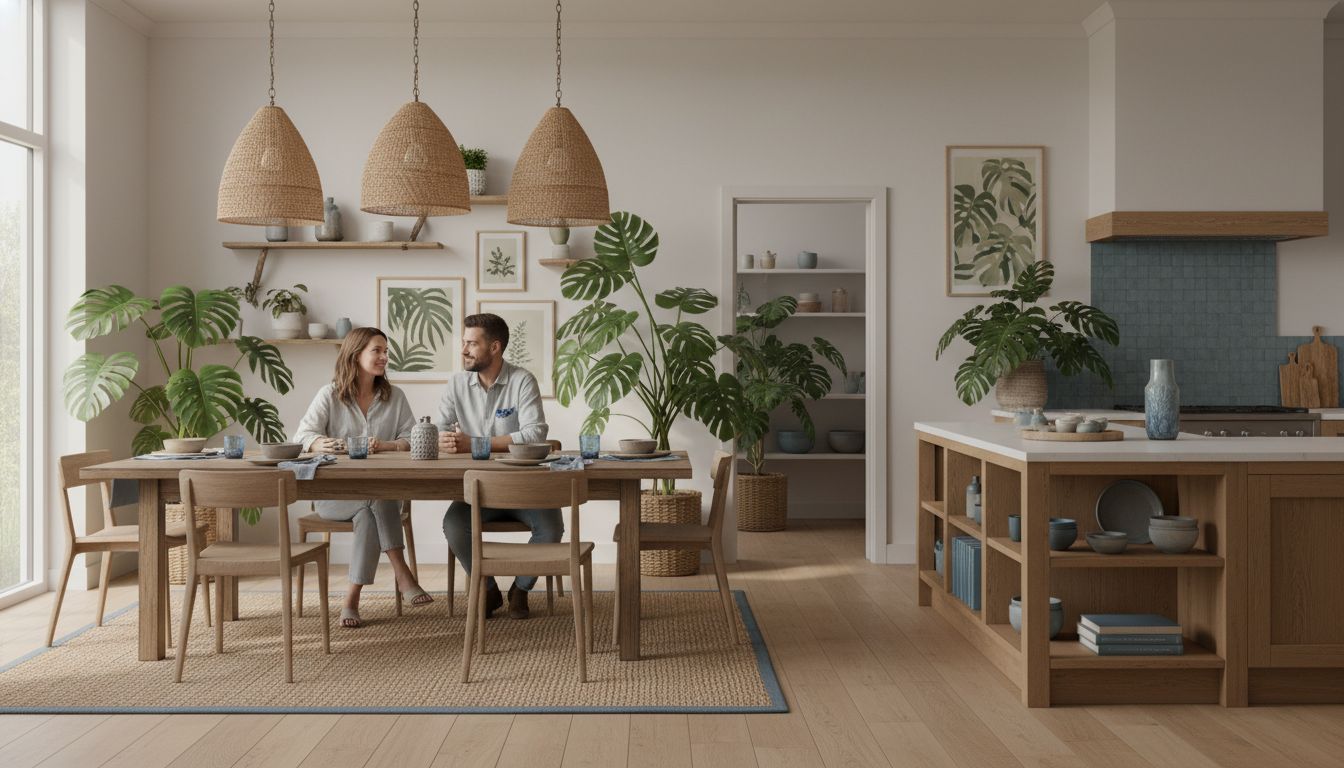
Here’s a summary of the main nature-inspired interior styles and their defining features:
| Style | Key Colors & Textures | Core Elements |
|---|---|---|
| Coastal Nautical | Soft blues, whites, organic | Marine motifs, driftwood, woven fibers |
| Tropical Jungle | Lush greens, exotic patterns | Botanical prints, vibrant plants |
| Woodland/Rustic | Natural wood, earthy tones | Timber, stone, handcrafted items |
| Minimal & Zen | Neutral, muted hues, smooth | Clean lines, minimal decor, greenery |
| Botanical & Biophilic | Leafy greens, natural materials | Living walls, potted plants, sunlight |
Biophilic Design Principles and Features
Biophilic design represents a revolutionary approach to creating living spaces that fundamentally reconnect humans with the natural world. According to Wikipedia’s exploration of biomimetic architecture, this design philosophy uses “nature as a model, measure, and mentor for providing architectural solutions across scales”, drawing inspiration from natural organisms that have solved complex environmental challenges.
At its core, biophilic design goes far beyond simply adding a few houseplants. Stripe Interiors reveals that the approach is scientifically proven to improve human well-being by creating environments that deeply reconnect us with natural systems.
Key principles of biophilic design include:
- Maximizing natural daylight and views
- Incorporating living plants and green walls
- Using organic, curved shapes and natural materials
- Creating water features and natural sound elements
- Integrating natural color palettes
- Designing spaces that mimic natural patterns and fractals
- Ensuring visual and physical connections with outdoor environments
When implementing biophilic design, understanding how vintage tile patterns can complement natural design elements can add depth and authenticity to your interior spaces. The ultimate goal is transforming living environments from static structures into dynamic, life-affirming ecosystems that nurture both physical and psychological well-being.
Selecting Materials and Tiles for Natural Spaces
Creating nature-inspired interiors demands careful selection of materials that authentically reflect the organic world. Stripe Interiors highlights an extraordinary range of natural materials, including reclaimed timber, adobe tones, stone, leather, and unique elements like Zellige tiles and Tadelakt plaster walls that bring raw, elemental beauty into interior spaces.
The foundational principle of material selection lies in authenticity and tactile connection. Gooding Wooding emphasizes the importance of incorporating rustic elements like wood textures and earthy tones that create a deep sensory experience of natural environments.
Key considerations for selecting natural materials include:
- Prioritizing sustainable and locally sourced materials
- Choosing textures that evoke natural landscapes
- Selecting color palettes inspired by ecological environments
- Balancing durability with aesthetic authenticity
- Ensuring materials reflect regional ecological characteristics
- Integrating materials with varying tactile qualities
When exploring natural material selections, understanding how to mix tile patterns can elevate your design, transforming simple materials into sophisticated, narratively rich interior experiences. The goal is creating spaces that feel simultaneously grounded in nature and thoughtfully curated.
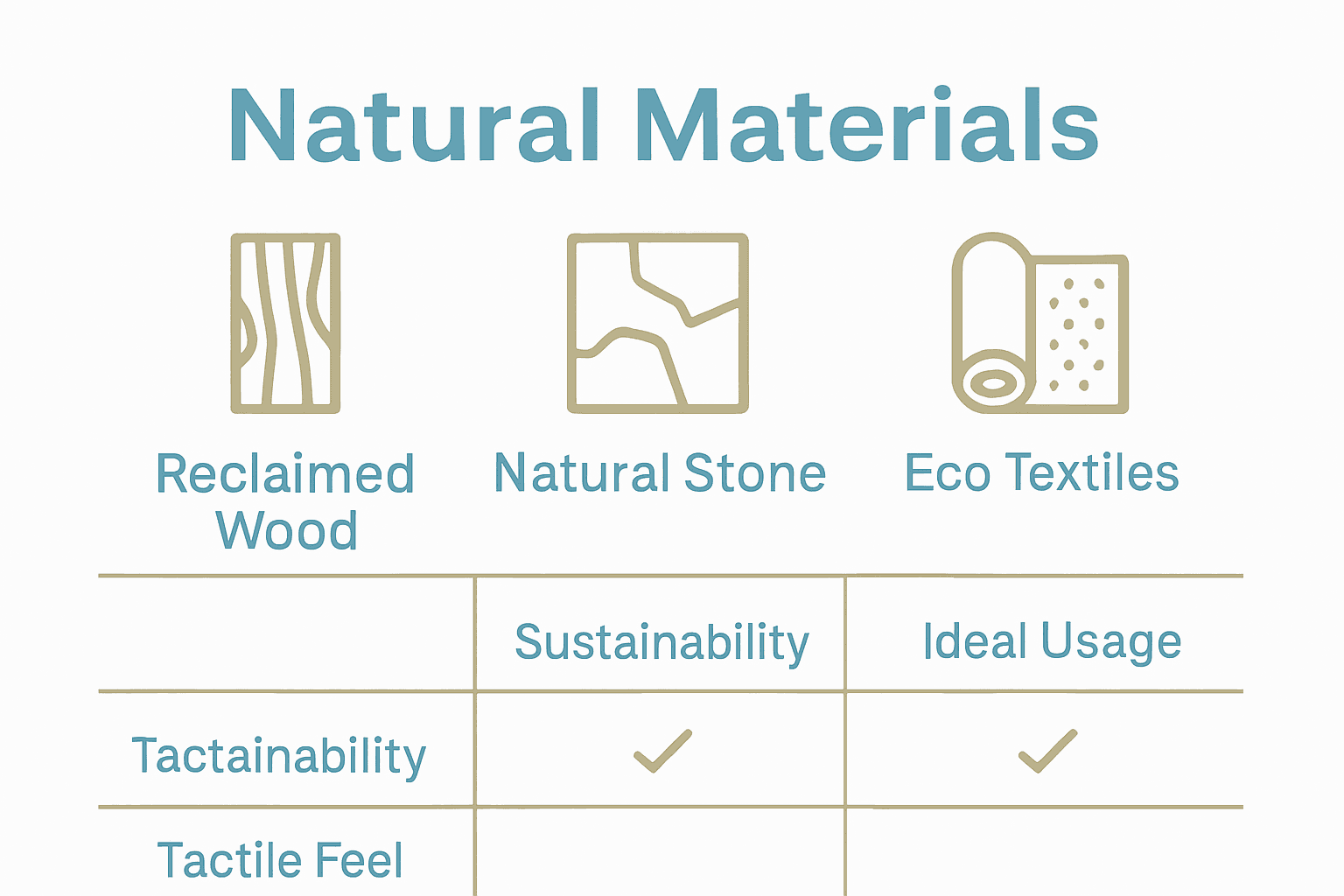
Benefits and Practical Implications for Projects
Nature-inspired interior design transcends aesthetic choices, representing a profound approach to creating spaces that actively enhance human well-being. Sustainability Directory reveals that these design strategies offer “a pathway to enhanced well-being and ecological responsibility, transcending mere stylistic preferences to become a critical area of inquiry within design theory, environmental philosophy, and public health”.
Practical benefits extend far beyond visual appeal. Stripe Interiors highlights scientifically proven advantages of biophilic design, demonstrating how intentional environmental connections can significantly improve human experiences in built spaces.
Key project implications include:
- Improved mental health and stress reduction
- Enhanced cognitive performance and creativity
- Increased occupant productivity in work environments
- Better air quality through natural ventilation and plant integration
- Reduced energy consumption through strategic design
- Stronger connection to local ecological contexts
- Long-term sustainability and reduced environmental impact
When implementing nature-inspired projects, understanding how to design with patterned tiles can add nuanced ecological references that transform spaces from mere functional areas to living, breathing environments. The ultimate goal is creating spaces that nurture both human inhabitants and the broader ecological systems we inhabit.
Common Pitfalls and How to Avoid Them
Navigating nature-inspired interior design requires careful consideration to prevent creating spaces that feel contrived or disconnected. Gooding Wooding emphasizes the critical importance of choosing a design approach that genuinely aligns with personal taste and aesthetic preferences to avoid a disjointed visual experience.
Design cohesion is paramount in nature-inspired interiors. Stripe Interiors warns that inconsistent implementation can undermine the entire design concept, recommending a holistic approach that maintains stylistic integrity throughout the space.
Common pitfalls to be aware of include:
- Over-styling with too many natural elements
- Neglecting functional design in pursuit of aesthetic goals
- Forcing nature-inspired themes that don’t match the space’s inherent character
- Using artificial or low-quality imitations of natural materials
- Ignoring local ecological context and regional design traditions
- Creating visual clutter instead of harmonious natural connections
- Overlooking practical maintenance requirements
When implementing your design, mixing tile patterns can help create nuanced, authentic connections to natural environments without overwhelming the space. The key is balance, subtlety, and genuine respect for the natural world’s inherent design principles.
Bring Nature’s Beauty Into Every Corner of Your Home
Transforming your living space into a nature inspired oasis can feel overwhelming with so many design choices and materials to consider. This guide highlights important challenges like selecting authentic, sustainable materials and achieving a harmonious balance that truly reflects natural elements without over-complicating your space. You want interiors that calm your mind, boost well-being, and remain stylish and functional for years to come.
At TileChoices.com, we understand these goals and offer a wide range of tiles crafted from natural stone, ceramic, and porcelain that perfectly complement biophilic and nature inspired interiors. From vintage tile patterns that add timeless character to modern organic textures, our curated collections help you create spaces with genuine natural beauty. Start exploring how to mix tile patterns for stunning spaces or discover tips on textiles in interior design to bring tactile warmth aligned with your nature inspired vision.
Ready to make your dream environment a reality? Visit TileChoices.com today to browse quality tiles that fuse ecological authenticity with elegant design. Take action now and craft a home that nurtures your wellbeing through thoughtful, nature-infused interiors.
Frequently Asked Questions
What are nature inspired interiors?
Nature inspired interiors are design approaches that integrate elements from the natural world into living spaces. This includes using organic materials, colors from landscapes, and incorporating living plants to enhance well-being and environmental consciousness.
How can I incorporate biophilic design principles into my home?
To incorporate biophilic design, focus on maximizing natural light, using organic materials, and including plants and nature-inspired patterns. Create spaces that enhance connections to outdoor environments through views and ventilation.
What materials are best for creating a nature inspired interior?
The best materials for nature inspired interiors include sustainable and renewable options such as reclaimed wood, stone, and eco-friendly textiles. Choose materials that reflect the colors and textures of natural landscapes to achieve an authentic feel.
What common mistakes should I avoid when designing nature inspired interiors?
Common mistakes include over-styling with too many natural elements, neglecting functional design, using artificial materials, and creating visual clutter. Aim for a cohesive look that respects the space’s inherent character and maintains a balance between aesthetics and practicality.
Recommended
- Master Mixing Tile Patterns for Stunning Spaces – Tile Choices
- 8 Luxury Bathroom Tile Ideas for a Stunning Makeover – Tile Choices
- 7 Timeless Tips for Choosing Vintage Tile Patterns – Tile Choices
- 7 Smart Home Office Design Inspiration Ideas for Success – Tile Choices
- Understanding the Role of Light in Arts and Crafts Homes -

